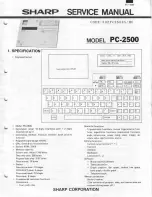
KDFX Reference
KDFX Algorithm Specifications
10-13
Algorithms 4–11: Classic / TQ / Diffuse / Omni Reverbs
4 Classic Place
5 Classic Verb
6 TQ Place
7 TQ Verb
8 Diffuse Place
9 Diffuse Verb
10 OmniPlace
11 OmniVerb
Parameters
Absorption
This controls the amount of re
fl
ective material that is in the space being
emulated, much like an acoustical absorption coef
fi
cient. The lower the setting,
the longer it will take for the sound to die away. A setting of 0% will cause an
in
fi
nite decay time.
Rvrb Time
Adjusts the basic decay time of the late portion of the reverb.
LateRvbTim
Adjusts the basic decay time of the late portion of the reverb after diffusion.
HF Damping
This controls the amount of high frequency energy that is absorbed as the
reverb decays. The values set the cutoff frequency of the 1 pole (6dB/oct) lopass
fi
lter within the reverb feedback loop.
L Pre Dly, R Pre Dly
These control the amount that each channel of the reverb is delayed relative to
the dry signal. Setting different lengths for both channels can de-correlate the
center portion of the reverb image and make it seem wider. This only affects the
late reverb in algorithms that have early re
fl
ections.
Lopass
Controls the cutoff frequency of a 1 pole (6dB/oct) lopass
fi
lter at the output of
the reverb. This only affects the late reverb in algorithms that have early
re
fl
ections.
EarRef Lvl
Adjusts the mix level of the early re
fl
ection portion of algorithms offering early
re
fl
ections.
Late Lvl
Adjusts the mix level of the late reverb portion of algorithms offering early
re
fl
ections.
Room Type
This parameter selects the basic type of reverb being emulated, and should be
your starting point when creating your own reverb presets. Due to the inherent
complexity of reverb algorithms and the sheer number of variables responsible
for their character, the Room Type parameter provides condensed preset
collections of these variables. Each Room Type preset has been painstakingly
selected by Kurzweil engineers to provide the best sounding collection of
mutually complementary variables modelling an assortment of reverb families.
When a room type is selected, an entire incorporated set of delay lengths and
diffusion settings are established within the algorithm. By using the Size Scale,
DiffAmtScl, DiffLenScl, and Inj Spread parameters, you may scale individual
elements away from their preset value. When set to 1.00x, each of these
Summary of Contents for K2661
Page 18: ...2 4 LFOs LFO Shapes...
Page 34: ...3 16 DSP Algorithms...
Page 54: ...5 4 MIDI Note Numbers Note Numbers for Percussion Keymaps...
Page 72: ...7 10 System Exclusive Protocol K2661 System Exclusive Implementation...
Page 82: ...9 4 Upgrading Sample Memory Choosing and Installing a SIMM for K2661 Sample Memory...
Page 334: ...10 252 KDFX Reference KDFX Algorithm Specifications...
Page 340: ...11 6 Glossary...
Page 382: ...12 42 Triple Modular Processing Alphanumeric Buttonpad Entries for DSP Functions...
Page 392: ...B 6 SysEx Control of KDFX MSB and LSB...
Page 442: ...D 20 Contemporary ROM Block Objects Controller Assignments Contemporary ROM Block...
Page 490: ...H 12 General MIDI Standard Mode Controller Assignments...
Page 492: ...I 2 Live Mode Objects Live Mode Programs...
Page 498: ...K2661 Musician s Reference Index...
Page 500: ......
















































